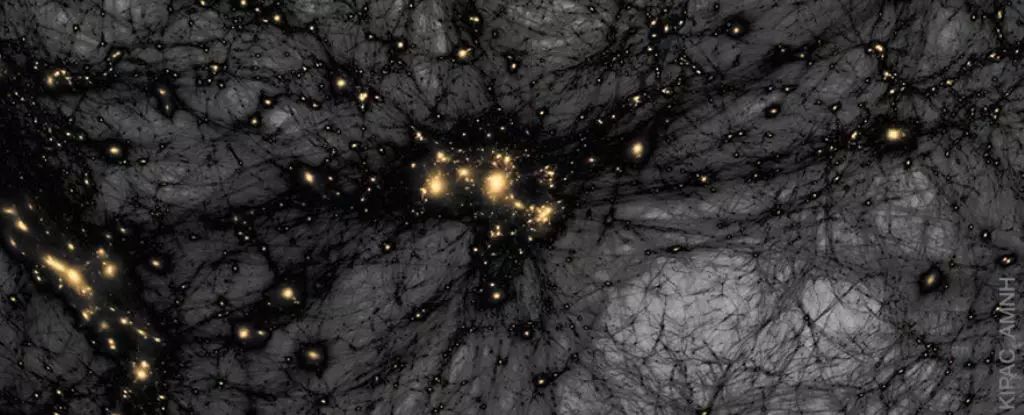For those captivated by the mysteries of the cosmos, the standard cosmological model has long served as a guide through the vastness of space and time. Yet, a perplexing conundrum has left many cosmologists scratching their heads: the Hubble tension. This puzzling discord manifests when the observed rate of the universe’s expansion at its infancy collides with more localized measurements, revealing a stark inconsistency. These discrepancies compel us to question fundamental understandings of our universe—are the principles of general relativity fundamentally flawed, or is there something more profound happening within the cosmic tapestry?
The Usual Suspects: Recycling Old Theories
The typical responses to the Hubble tension often veer toward skepticism surrounding dark matter, with theorists tilting toward alternative theories like modified gravity. This landscape is further muddied by suggestions that maybe time isn’t a uniform constant or that our universe spins like a celestial carousel. These speculative ideas, while intriguing, often feel like band-aids on a deeper existential wound. The rush to eliminate dark matter from our equations may hint at a reluctance to embrace the ethereal nature of reality itself.
But what if we leveraged a paradigm shift rather than dismissing established concepts? Enter the notion of evolving dark matter, an idea that hasn’t garnered as much attention but deserves a well-deserved spotlight.
Reframing the Dark Matter Discourse
Traditionally, dark matter is viewed as a silent player in cosmic expansion, a constituent that interacts minimally with electromagnetic forces. Brilliant observations support its existence, despite our inability to detect dark matter particles directly. However, what if we reimagined the qualities of dark matter itself? What if it could transform over time—oscillating, adapting, and evolving in response to the universe’s changing dynamics? The ramifications of such a theory could be groundbreaking.
Recent research has dared to propose a fascinating model: one where dark matter is not static but rather a dynamic force within our universe. By investigating the intersections of evolving dark energy alongside evolving dark matter, researchers argue that this dual evolution could provide a more coherent explanation for observational data—taking into account the puzzling phenomena we encounter, such as the Hubble tension.
The Oscillatory Hypothesis
The implications of an oscillating dark matter equation of state (EOS) introduce a new layer of complexity into our understanding of cosmic dynamics. This notion isn’t entirely alien; we observe similar behaviors in neutrinos, which, while not able to account for all dark matter, certainly contribute to our understanding of hot dark matter. Neutrinos undergo mass oscillation, raising the tantalizing question: could cold dark matter undergo a similar transformation?
This idea isn’t just theoretical fluff; it seeks to align closely with observed phenomena. Preliminary models suggest that about 15% of the cold dark matter fits an oscillatory nature while the majority remains ‘standard’ dark matter. This balanced symbiosis could potentially reconcile the longstanding Hubble tension without entirely negating our existing observations of dark matter.
A Cautious Outlook on Evolving Dark Matter
While the proposition of evolving dark matter opens new avenues for research, it remains essential to exercise caution. Scientists have labeled this conceptual framework a ‘toy model’—a sandbox where ideas can be tested without the weight of empirical constraints. It ignites a fire of curiosity and innovation but leaves many details unresolved regarding the characteristics of dark matter particles themselves.
Despite these limitations, this pioneering notion of evolving dark matter revitalizes the conversation around cosmic mysteries. Instead of steering away from established theories, it encourages cosmologists to explore an adaptive and multifaceted version of dark matter—one that may be crucial in unraveling the intricacies of our universe.
As the scientific community wrestles with these deep questions, we find ourselves on the brink of potentially groundbreaking revelations. Considering evolving dark matter may not just be a prudent exercise; it may very well be an essential key to unlocking some of the cosmos’ most elusive secrets. The universe may be urging us to broaden our imaginations and refine our theories in pursuit of fundamental truths that lie within its expansive and enigmatic embrace.


Leave a Reply